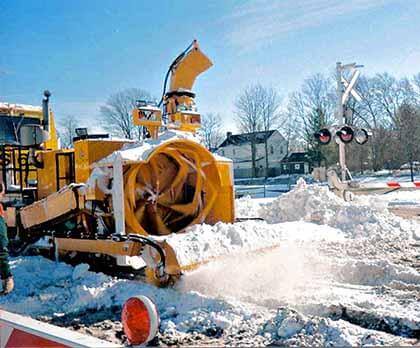By Joe Anuta
Despite drawing barbs from outraged public officials, the Long Island Rail Road operated according to plan after it was slammed by the Dec. 26 blizzard, a spokesman for the transit agency said. The railroad’s response will hold up to an upcoming Metropolitan Transportation Authority inquiry, said Sal Arena, since the railroad’s procedures and reaction to the storm were separate from other departments’ like the subway system or other embattled agencies like the city Sanitation Department.
“Within the MTA, every operating agency has to direct their own operation — the circumstances are different,” he said. “The mayor’s office sets up some central command, but other than that there is no connection between the city’s response and our response.”
According to Arena, that response started Dec. 24, when uncertain weather reports predicted possible snow and officials convened a meeting about the storm.
“I don’t think there’s any question that we were ready for it,” Arena said.
But City Councilman James Vacca (D-Bronx), who chairs the Council’s Transportation Committee, was sharply critical of the transit authority’s preparation and response to the blizzard.
“Service was down, and the LIRR commuters have been affected the worst,” he said. “I don’t think the MTA learned their lessons.”
Vacca will be holding a hearing to investigate the MTA’s response to the blizzard Friday.
“I think it goes without saying: a lot of people were caught with their pants down during this storm,” he said.
When the storm finally hit Dec. 26 and the snow began to pile up, Arena said, the first service cuts occurred at 8:12 p.m., when LIRR officials announced that the Oyster Bay line would be closed due to the winter storm. Less than two hours later, it suspended service for the entire system, ensuring all trains reached a working station and passengers were not stranded in the cars.
The reasons for the closure were snow in excess of 10 to 13 inches, frozen switches and a covered third rail, which 80 percent of the LIRR’s trains depend on for electricity, Arena said.
Once the snow started to fall, LIRR employees began to use equipment to clear the tracks of snow and unfreeze switches, he added.
“Unfortunately, no two storms are alike. The blizzard conditions of this storm resulted in continuous snowfall for 24 hours, rapid accumulation, high winds and continuous drifting of snow,” Arena said. “Once you shut down, it’s a slow process coming back.”
Nearly 24 hours after the first closure, at approximately 8:10 p.m., diesel trains began making limited trips on the Port Washington line with only one track open, and the LIRR began the slow process of thawing out additional routes.
Commuters were also irked at slow, erratic service and trains that would slow down upon reaching a station, only to speed away without opening their doors.
But according to Arena, it was all part of the plan. The LIRR had to restore service to the most heavily trafficked LIRR lines, like Port Washington, before getting to small lines that he said could be serviced by buses. And as for the phantom trains, he said test trains had to be run along recently plowed tracks in order to test switches and track safety without the risk of passenger casualties.
Reach reporter Joe Anuta by e-mail at januta@cnglocal.com or by phone at 718-260-4566.



































